Life is complicated. Living is a process. Plan it all you want but interruptions to the process are inevitable whether from internal failure or external forces, physical, emotional, financial. Life is like that. When an artist starts on a journey of discovery through vision and technique, they are like a mongrel with a juicy bone. They belong to no breed, but their own. No comment nor criticism will deflect them from their search for the truth they think hidden in what they are creating. Obsession to some. Insanity to others. Insignificant to many more. The focus of life for the artist, returning to the bone until all the goodness is consumed, vision clarified.
What is the beginning of the process? For me it varies from time to time but it’s always from something in my life. Usually, it is something observed. Currently, and for the last three or four years, it has been my obsession with the sea and the sea defences of the Cuckmere and Splash Point in Seaford. It seems that the Environment Agency is quite happy to spend hundreds of thousands of pounds every year to restore Seaford’s beach defences which are based on a shingle bank, a shingle bank that is then rapidly taken by ‘off-shore drift’ to be deposited further along the coast at Dungeness where apparently the beach is now 200 feet further out to sea than it was 20 years ago. Meanwhile the are allowing the local tourist attraction of the Coast Guard Cottages in the Cuckmere to disappear into the sea as their defence is following their sea wall into oblivion.
Initially I walked down to the Cuckmere and the Coastguard Cottages simply as a form of exercise but also because I was enthralled by storms and the actions of the sea on the cliffs of the Seven Sisters. I’m in the habit of walking around with a camera and I use it all the time probably growing out of my work reviewing and writing about hotels when I was running HotelDesigns magazine. This constant use of the camera supplemented by drawings has proved to be a rich source of material for developing ideas out in all sorts of different directions. Currently the obsession is with the decay.
Why the obsession with decay? Basically, I think I became fascinated by a combination of factors: the colours; the way in which rust and decay contrasted against the sea and the land; the hand of man not being in charge or in control of the processes. I have no pretensions to be a photographer although I have to say I am quite impressed by the quality of some of the colour that I have succeeded in capturing. Probably that’s down more to the quality of the camera and the Japanese technician who wrote such good algorithms into the computer chip that controls it rather than necessarily to my own visual skills. The camera I have has a very large sensor 55 megapixel sensor so it produces images which are nearly 9000 pixels across by 6000 pixels high, enabling me to both zoom in on the computer to small aspects of the photo but also to then print them out very large without any loss of quality. I print out and take down to the painting studio the photographic prints at A2 and A3 to work from.
It’s at this stage that the notebooks and the coloured pencils come into play. Here I start to refine and analyse what will eventually go on to canvas. I have several note/sketch books, so in my little notebook I will look at the geometry of the picture construction. I will look at the beginning to sorting out the colour relationships using the coloured pencils. The notebooks vary in size from the very large which I often use to draw directly from observation, through to a smaller notebook. I begin by using the colour pencils to analyse the colour relationships I am seeing. I work from the photographs so the notebooks tend to be full not just of colour notes but also analysis of the spaces in terms of their internal geometry and the internal geometric structure of the painting that I’m going to create.
The process then proceeds into an intermediate stage involving works on paper which often in the past would have been referred to as ‘cartoons’ (thinking of Rafael) but that is not a label that attaches to these as they are actually A1 size paintings. Here I explore the colour further before committing myself to moving up in scale to 5 foot by 4 foot or three foot by 4 foot canvases which are obviously a much larger investment in terms of time and materials than working ideas out on paper. Through trial and error, I have learned to use a high quality cartridge 330 grammes per square metre weight which means that it doesn’t cockle very much on the wall where I staple it to work. I prime each sheet with three layers of gesso primer which also helps prevented cockling and also stops any idea that any acids in the paint or solvents or oil pastels that I use might attack the paper itself.
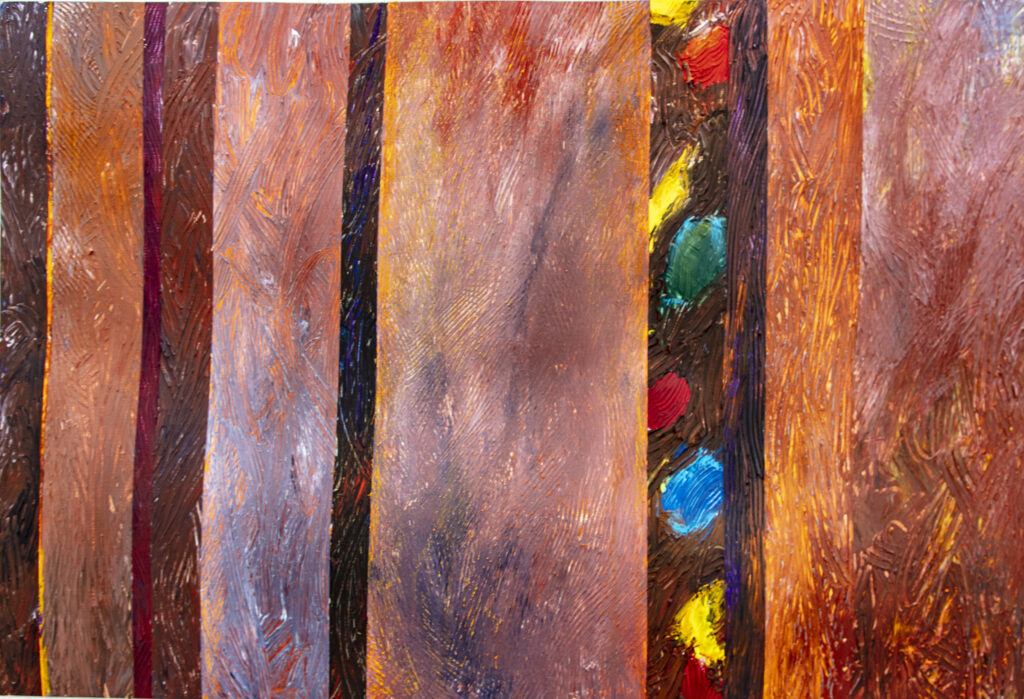
The painting in acrylic with oil pastel additions on the gesso primed paper. Image is 27 x 17 inches approx (£450 if you are interested)
At this stage the photographs will be stapled to the wall. I then usually work on two or even 3 sheets at a time of the A1 primed paper. With all my paints on a large table behind me I can then start taking the drawings from the notebook and transferring the geometry that I’ve worked out onto the paper. Sometimes I’ll have two different ones and if they are opposite pages it can result in me sometimes using it upside down because the focus has shifted to colour and texture. A bit silly perhaps but usually I work it out. Like the dog with a bone, I don’t let go of the ideas very quickly and the idea is usually developing in at least two different ways. First of all there’s actually the visual structure of the paintings, and here the influences are from Piero dell Francesca to Bridget Riley.
You will know from my previous writings how for years I used the grid as a symbol of the way in which the control mechanisms of government dislocated the way in which we want to live the rules which inhibit our freedoms. The grid has been an artist’s control technique since the Renaissance. I’ve now reached the point where I recognise that that symbology is no longer appropriate because we now have a group of politicians who have no idea how to run a country, as having surrendered authority for many years to the European Union they are incapable of making decisions. So now the country sits in a gentle decay invaded by outsiders legally and illegally. Many corrupted by high finance, and big banks etc are all seeking to exploit population as a resource to enrich themselves. The grid has broken.
Our defence against this exploitation has always been Parliament. Without that defence our civil society with its hundreds of years of common law, religion, and social cohesion is disintegrating. It is this disintegration that the neglect of our sea defences shows so clearly. It is said that every empire in its final days, Roman, Greek or Egyptian, all had a flare of creativity lasting 50 to 60 years after the point at which the political collapse had become evident. It seems to me quite symbolic that the collapse of our sea defences in rust and lichen under the pressure of the sea loaded with gravel provides a similar simulacrum of colour in the way which music and arts has provided on the larger scale social scale.
I’m too old to be a revolutionary all I can do is observe. Much as Tolstoy observed. Much as artists have observed through the centuries and recorded and reflected in their artwork. So now on canvas I take the textures, the colours, the balance of geometry that I have explored on paper, and then take it up in scale larger marks. More colour, more intensity, more paint to express both inner views and outside perceptions. In none of these explorations am I able to shed my past. And none of these explorations am I unable to deny the understanding of art design that I have received and researched over the years. My experience as an artist started at my father’s knee when he taught me to draw Spitfires at the age of 6. Now I’m 76 I’m still trying to sort out the masterpiece that is somewhere inside me perhaps. Or maybe somewhere in my past, on a wall forgotten, is a masterpiece I’ve created whether it be the design of a carpet, a light fitting, a piece of furniture or a painting. I have had 70 productive years exploring the bones that I have found as a dog in the art world.
Once at a party I heard a man boasting how he had advised his granddaughter on her choice of discipline at university. She had wanted an arts course, but he had persuaded her that she would find getting a job easier if she studied accountancy. I told him I’ve had 70 years in the art world, and I regret very little of that time. I have been rich as a designer, poor as a bankrupt, but my life has always been rich because it has been full of the arts and culture that I have enjoyed. Did he really think his granddaughter’s life would be enriched as an accountant? Did he really think that turning her against the arts as a teenager was contributing to her well-being?
Physically I have had a tough time with all sorts of operations and ailments but none of those have inhibited my enjoyment of worlds beauty. The process of creating beauty is a personal exploration of our world that every artist makes. You may criticise and some will label work as kitsch, but whether it is a David shepherd or a Trechikoff or Roger Dean, or indeed one of my works, they will all have been created through a process involving not just the hand and eye but the heart and soul of the artist. I hope you will bear this in mind next time you’re in a gallery or looking at a piece of statuary in the public space and that you will be just a little humble in front of the efforts and creativity the artist put into sharing their view of our civilisation’s beauty with you. Doing so will make you richer.

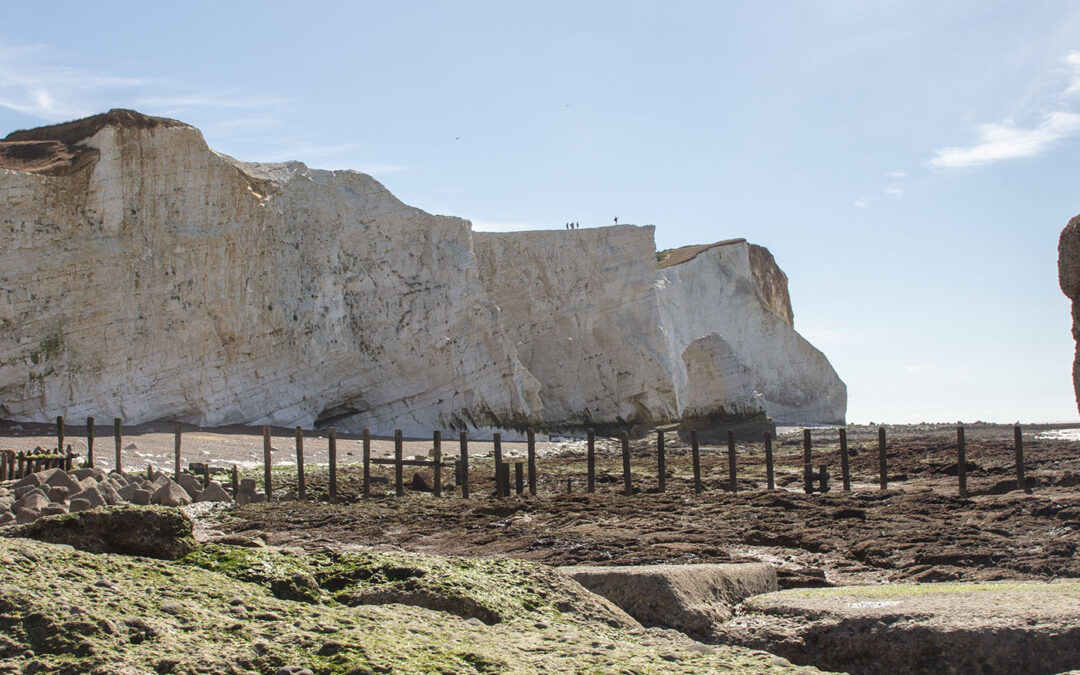
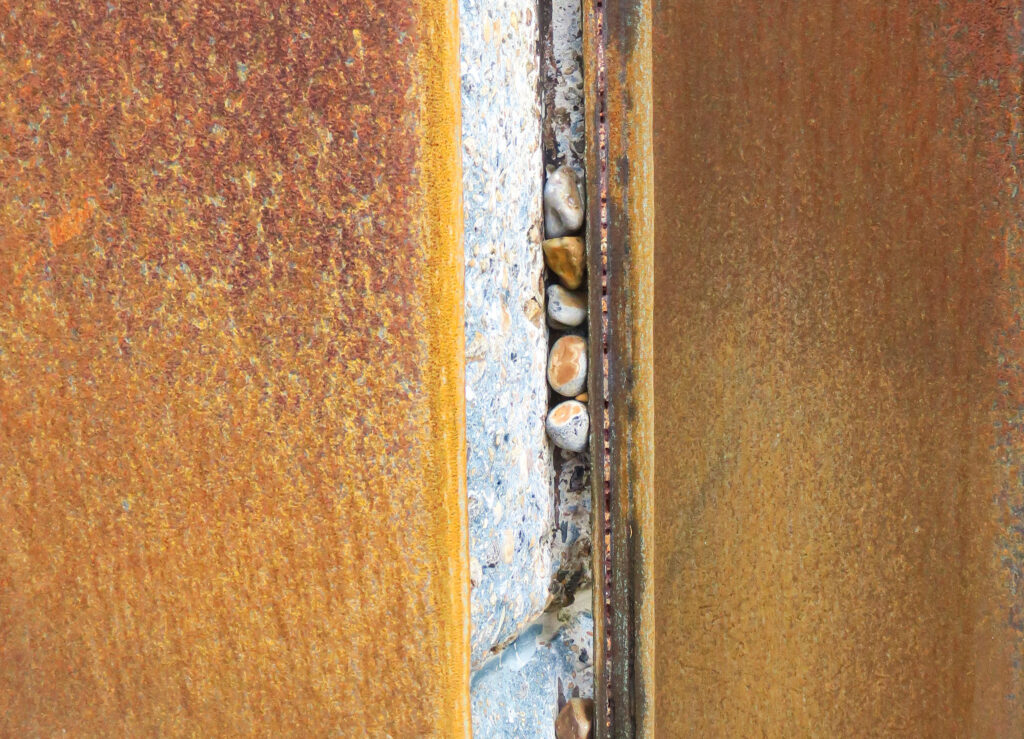
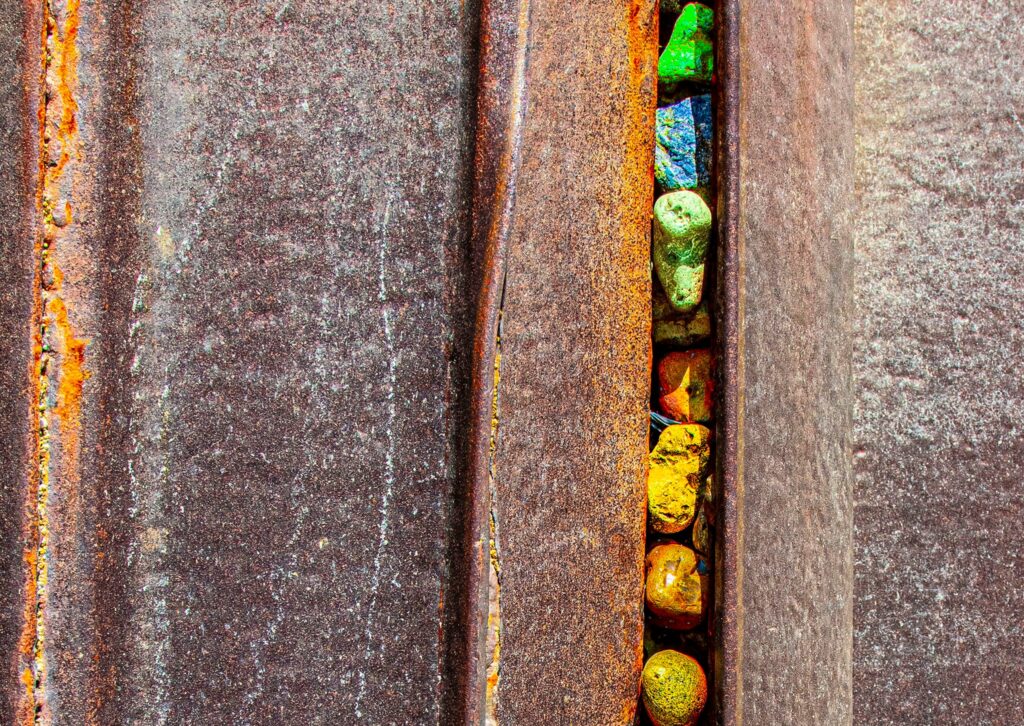
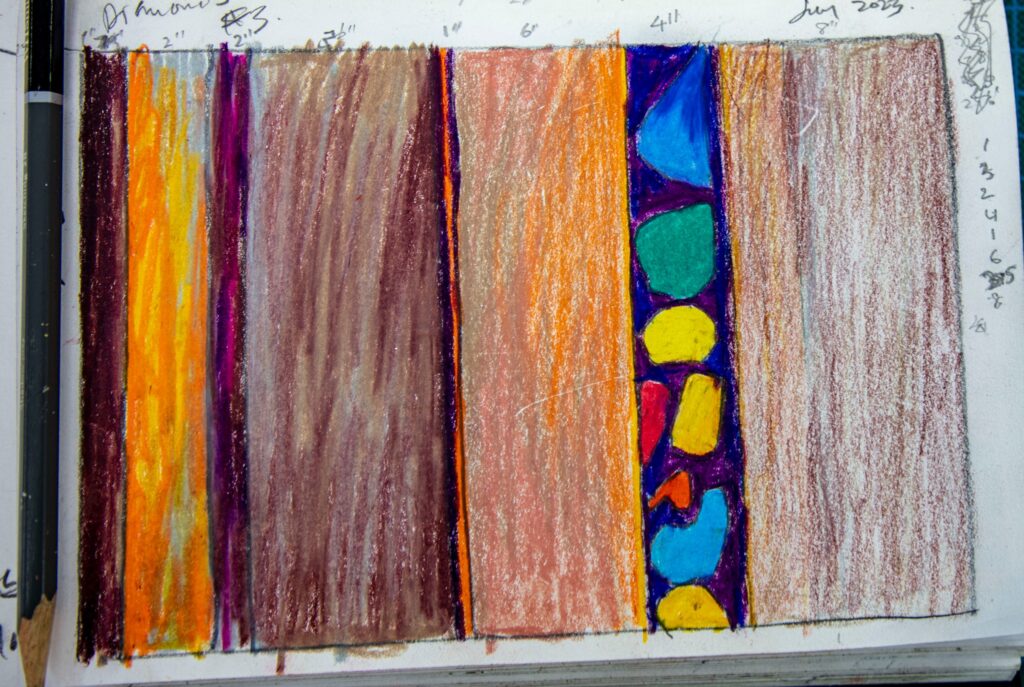

Recent Comments